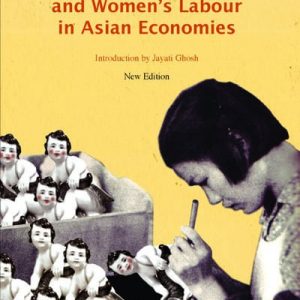Rethinking Marxism, vol. 26, no. 1, January 2014
by Smita Ramnarain
This revised and expanded edition of Peter Custers’s (1997) book considers the often-sidelined question of women’s productive labor in capitalist accumulation. Based on primary data collected on women’s work in the factory, in home-based production, and in the technological sector in India, Bangladesh, and Japan, Custers engages with existing literature on the interrelationship between capitalism and patriarchy and exposes the discourses mobilized in the appropriation of women’s work in capital accumulation in a rapidly industrializing Asia. This book will be of interest to feminist and Marxist scholars who are engaged in explicating the connections that facilitate the exploitation of women’s labor in global industrial production.
Key Words: Capital Accumulation, Global Production, Industry, Productive Labor, Women
In the context of rapid industrialization and globalization in Asia’s dynamic economies, Peter Custers’s book highlights the continuing relevance of Marxian theory to understanding the exploitation of women’s productive and reproductive work. At the same time, it critiques the silences in Marx’s work regarding the key role of women’s labor in the perpetuation of capitalism. Blending feminist scholarship on the sexual division of labor, labor in the household, and subsistence production with Marxian insights on exploitation, the extraction of absolute and relative surplus value, and the industrial reserve army, Custers discusses the significance of female labor in facilitating rapid, ever-increasing capital accumulation in three Asian countries: namely, Bangladesh, India, and Japan.
With a detailed introduction by Jayati Ghosh, the book is divided into four parts. Part 1 looks at how two leading theorists of the working class—Marx and Proudhon—entirely disregarded women’s domestic labor and the sexual division of labor. Even as Marx insisted on labor time being the measure of value, he failed to account for domestic labor time and the production of value within this economy. The contribution of women’s reproductive labor toward maintaining workers’ productive capacities in the workplace was naturalized by Marx, as he counted only labor performed in the public economy as productive. While Marx dismissed domestic labor, Proudhon’s egregious views on women involved their complete subordination to their husbands and their exclusive dedication to household responsibilities. It was left to later women’s movements to rectify the male bias obscuring women’s labor in capitalist processes…
Read the entire review in Rethinking Marxism, vol. 26, no. 1, January 2014

Comments are closed.